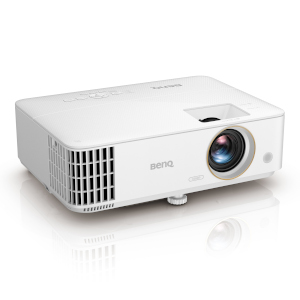I've been using, selling and installing projectors for a little over 30 years. In that time there have been massive changes in the technology and the prices. The fact that someone can spend less than a grand and get a pretty respectable image is just tremendous.
If my time with projectors has taught me anything it's that new buyers have certain preconceived ideas about what's important when they're choosing a model. Once they've lived with a projector for a while then they realise that other stuff was actually more important. For example, lens quality is more important than 'HD vs 4K', and black level is more important than outright brightness.
One of the firms I used to work for was the UK's biggest supplier of CRT projectors to the leisure market installer trade. This was mostly driven by football and the pubs market. I mention this because it highlights why manufacturer figures on brightness should be taken with a pinch of salt.
Measured in the same way as today's digitals, these old CRTs put out around 160-190 ANSI lumens. That was enough to get a decent image on a 72" diagonal screen in a typical pub during the day. There were a couple of caveats; you couldn't have any daylight falling directly on the screen, and you'd want to switch off any electric lights that were hitting the screen too. Other than that they worked well even if most of the installers couldn't converge for toffee.
Image: Seleco SVP350 CRT
View attachment 281643
Contrast that with todays budget gaming/entertainment projectors with claimed brightnesses of 3000-4000 ANSI lumens. You'd think there'd be no contest.
Image: Benq TH585 - gadgetguy.com review
View attachment 281644
The image is a little unfair. He's obviously projecting onto the window blinds which are somewhat translucent (you can see the boats through the windows) and there's also some sunlight falling on the image from the window to the right of the shot.
The point here is threefold.
1) Manufacturer brightness figures are a bit of a con, but they're all involved in the same 'arms race' to quote big numbers because that's all consumers have to go off
2) Don't sweat a difference of a few hundred ANSI lumens between models. It won't make a significant difference
3) Daytime projection in the same way you might use a TV just isn't going to happen no matter what the manufacturers claim. However, with a sympathetic setup then you can project during the day. Just avoid natural light falling directly on the screen. The sun trumps any projector
You can read the rest of the gadgetguy review here. It's pretty useful.
https://www.gadgetguy.com.au/benq-th585-2020-home-entertainment-projector/
Stuff that will catch you out:
* Long 4K-capable HDMI cables are expensive
* Digital keystone image correction is worthless. It kills image resolution and reduces brightness. Optical/mechanical lens shift is better but not as widely available. Plan your installation to avoid having to use digital keystone
* Running picture (with sound) all the way to the projector, and then running audio cables back from the projector to a sound system is crap. Take audio direct from any sources in to a sound system. Run HDMI for picture only to the projector
* Built-in streaming apps on any projector have very little value. A Fire TV- or Roku stick will wipe the floor with them. It'll be slicker and keep working for longer, all for a cost of just £30-£40
* You can't project black. If a projector's black looks grey then no adjustment is really going to fix that. The brighter the projector tries to be then the worse this becomes, and it robs the image of it's ability to create a sense of depth and colour saturation. This is why demos are important and assessing black level with any contrast enhancing features switched off
If you're in Fife then RicherSounds at Edinburgh might be worth contacting. See if they can set up a demo of the Benq (£629) versus the Optoma HD29He (£749). If gaming is really important to you then the Optoma manages 8ms in 1080 SDR mode. It also supports 120Hz frame rate. Better blacks. Good motion.

 www.benq.eu
www.benq.eu


